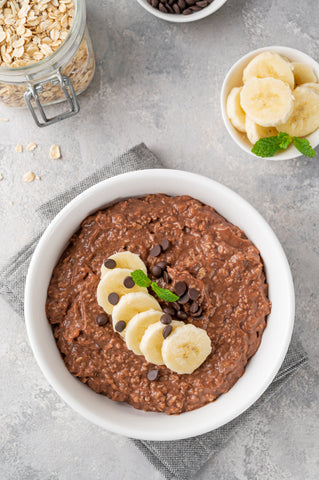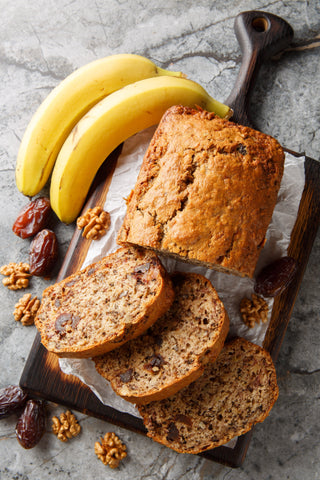
Engorgement vs. Letdown: How to Tell the Difference & Find Relief
Share
If you're nursing and suddenly feel like your boobs have morphed into overinflated balloons or get that zingy sensation like they're about to become a milk geyser—mama, you’re not alone.
Breastfeeding is magical, but it also comes with sensations that are confusing (and sometimes uncomfortable). The most common ones? Breast engorgement and letdown reflex. They can feel similar—but knowing the difference helps you manage both with more confidence and less stress.
Let’s walk through what each one feels like, how to relieve the discomfort, and how to tell them apart. You’ve got this💪
What Is Breast Engorgement? (And Why It Happens)
Breast engorgement is when your breasts become overly full of milk, blood, and lymphatic fluid. They swell, feel tight, and sometimes ache. This often happens:
- Around days 2–5 postpartum when your milk first "comes in"
- If you go too long between nursing or pumping
- When your baby suddenly changes feeding patterns (hello, longer naps!)
- If you’re producing more milk than your baby needs
How to Know If It’s Engorgement:
- Your breasts feel hard, warm, or painfully full
- They may throb or feel like they might burst
- Your nipples can flatten, making it harder for your baby to latch
- Milk flow may be slow or blocked (not what you’d expect!)
How to Relieve Engorgement Naturally:
- Nurse often—every 2–3 hours, even at night
- Use gentle hand expression or pump just enough before a feed to soften the breast
- Apply cold compresses for 15 minutes after nursing to reduce swelling
- Use warm compresses and massage before nursing to stimulate flow
- Wear a supportive, wire-free nursing bra (nothing too tight—you want comfort, not pressure)
What Is Letdown Reflex? (That Tingly Milk Moment)
Letdown is your body’s milk-release reflex—usually triggered by your baby sucking, your pump turning on, or even just hearing your baby cry (yep, the brain is wild).
It’s powered by oxytocin, the feel-good hormone, and is usually a sign that your body is doing exactly what it’s supposed to.
How Letdown Feels:
- A tingling or pins-and-needles sensation in the breasts
- A sudden feeling of fullness, followed by milk flow
- Leaking from the other breast while your baby is nursing
- A warm or slightly aching feeling—but not painful
How to Manage Letdown:
- Use nursing pads to catch leaks and avoid wet spots
- If your letdown is strong, lean back slightly to slow the milk flow for your baby
- Hand express a little milk before feeding if your baby chokes or gulps
- Stay hydrated and relaxed to encourage smoother letdowns
Quick Comparison: Engorgement vs. Letdown
| Feature | Engorgement | Letdown |
|---|---|---|
| Timing | Happens when breasts are too full | Happens when milk is being released |
| Feeling | Hard, swollen, painful | Tingling, warmth, mild aching |
| Milk Flow | May be slow or blocked | Starts suddenly, often fast |
| Relief | Nursing, cold compresses, massage | Nursing, deep breaths, leaning back |
You’re Not Doing This Wrong—You’re Just Learning 💛
Engorgement and letdown are both normal parts of the breastfeeding journey, especially in those early weeks. With a little patience, some self-care, and the right techniques, they get easier to manage—and eventually feel like second nature.
A soft, flexible nursing bra that adjusts to your changing shape can make all the difference during engorgement and letdown. Our wire-free maternity bras offer gentle support without adding pressure. Perfect for everyday wear—and for navigating those surprise milk moments. 🤱💛
FAQs
Q: Is it normal for my breasts to feel hard even after nursing?
A: Yes, especially in the early postpartum days. If your breasts still feel firm or full after a feed, you might be experiencing engorgement or incomplete drainage. Try massaging while nursing or pumping a little afterward to relieve pressure.
Q: How long does breast engorgement last after birth?
A: Engorgement usually peaks around day 3 to 5 postpartum and eases within a few days if you’re nursing or pumping regularly. However, it can return later if you skip feedings or your baby sleeps through the night unexpectedly.
Q: Can you have letdown without breastfeeding?
A: Yes! Some moms feel the letdown reflex when they hear their baby cry, during a warm shower, or even when thinking about their baby. It's a hormonal response, not just a feeding one.
Q: How do I know if my letdown is too fast for my baby?
A: If your baby pulls off the breast, coughs, sputters, or gulps loudly during nursing, your letdown might be forceful. Try reclining slightly while feeding, or hand express a bit before your baby latches to slow things down.
Q: What kind of bra should I wear during engorgement or letdown?
A: Choose a wire-free, stretchy nursing bra that provides gentle support without compressing your breast tissue. Compression can worsen engorgement or lead to clogged ducts. Look for breathable, buttery-soft fabric that adapts to your body.
Need a little comfort and support while your body adjusts? You’re doing amazing, mama. Let your body do its thing—and don’t forget to show yourself some love along the way. 💛🌸

















































